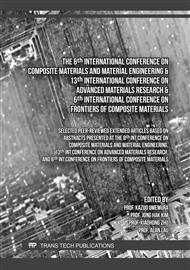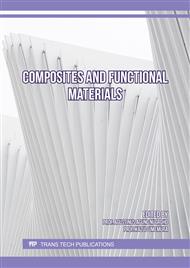p.5
p.11
p.19
p.25
p.35
p.45
p.51
p.65
Asymmetric Four Point Bend Test Method for Interlaminar Shear Strength in Ceramic Matrix Composites
Abstract:
Asymmetrical Four Point Bend test method is proposed for measurement of interlaminar shear strength in continuous fiber reinforced ceramic composites. The current standard ASTM test method (ASTM C1425) for interlaminar shear strength of composites uses a double edge notched compression (DNC) coupon. Large variation in measured strength is observed with the standard ASTM test method, possibly due to machining variability and damage at the notches. The proposed test AFPB method for ILSS is adapted from ASTM C1469 Standard Test Method for Shear Strength of Joints of Advanced Ceramics. This test method does not require any machining of notches and the sample size requirement is much smaller than the ASTM test method. The shear loading in this method is similar to the standard short beam shear test (ASTM D2344) with higher shear to tensile ratio compared to SBS with AFBP. Using finite element analysis, coupon geometry and the distance between the loading and support pins was optimized to maximize shear and minimize tensile and compressive stresses on the specimen. It was found that the variability in the measured ILSS strength was lower with this method compared to the ASTM standard method using the DNC specimen. In addition, the value of ILSS measured using AFPB method was found to be consistently higher than that measured using DNC coupons. It was also found that specimen preparation (cutting, polishing, etc.) did not have significant effect on the measured strength.
Info:
Periodical:
Pages:
19-24
Citation:
Online since:
July 2023
Authors:
Price:
Сopyright:
© 2023 Trans Tech Publications Ltd. All Rights Reserved
Share:
Citation:



